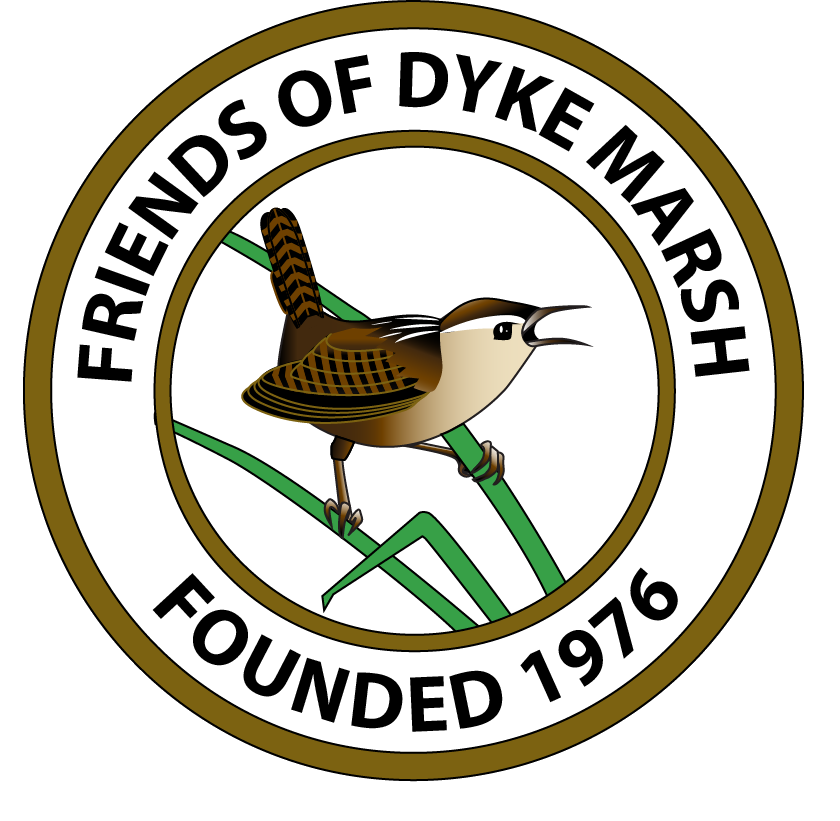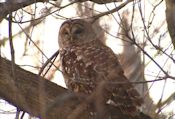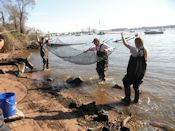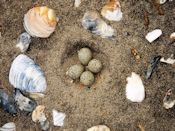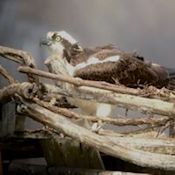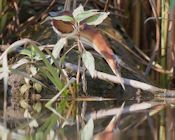On April 8, 60 dedicated volunteers collected around 80 bags of trash in the Dyke Marsh Wildlife Preserve, Belle Haven Park, Belle Haven Marina and along the GW Parkway trail and the Potomac River shoreline from 9 a.m. to 12 noon. Items included cigarette butts, bottle tops, plastic bottles, whiskey bottles, a fishing rod, a soaked sleeping bag, two rubber tires (one from a tractor trailer truck), fast food debris, various balls and much Styrofoam and miscellaneous plastic.
FODM surveyors believe that a barred owl (Strix varia) pair has set up a breeding territory near the Belle Haven Park picnic area this spring (2017). According to FODMer Larry Cartwright, barred owls select a breeding territory based on suitability for nest sites and prey base, partly to monopolize food sources and partly to prevent another male from attempting to break the pair bond.
Under beautiful spring skies, 40 eighth graders and their teachers from Alexandria’s St. Stephens and St. Agnes School visited Dyke Marsh on April 5, 2017, under the leadership of their science teacher Robert Davis, Middle School Science Department Coordinator. Using a seine net, students collected and studied fish and other aquatic life.
Several FODMers are helping with Virginia’s second Breeding Bird Atlas, a survey of all bird species breeding in the state. Headed by Dr. Ashley Peele, a Virginia Tech avian ecologist, the project is featured in a March/April 2017 Virginia Wildlife magazine article by FODM President Glenda Booth and titled “On the Hunt for Virginia’s Breeding Birds.” You can read it online here.
On March 7, 2017, we welcomed the return of ospreys (Pandion haliaetus) to the Dyke Marsh Wildlife Preserve. Ed Eder reported that “the female quickly began rearranging sticks on the nesting platform” at the Belle Haven Marina. “She directs the construction although the pair both gather nesting material,” Ed observed. Ed, an expert naturalist and birder, said that the male has used this platform for nearly 10 years.
On February 26, 2017, Patrice Neilsen gave a presentation on her research on secretive bird species of the Washington, D.C., region. She studied the king rail, Virginia rail, sora, least bittern and American bittern in surveys at 51 points in 25 marshes in 2013, 2014 and 2015. She surveyed at sunrise or sunset three times a year. She found no Virginia rails, sora or American bittern, but found least bitterns and king rails in several locations.
